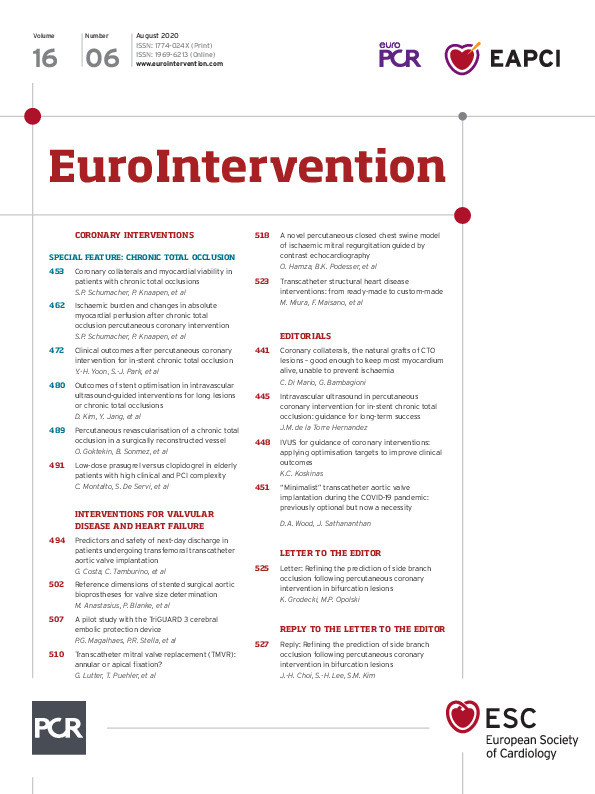
We thank Drs Grodecki and Opolski1 for their interest in our study2. We sought to evaluate the clinical value of coronary computed tomography (CT) angiography before percutaneous coronary intervention (PCI) for bifurcation lesions. Hence, as all PCI is performed with invasive angiography, preprocedural coronary CT angiography is worth performing only if it shows valuable findings not revealed by invasive angiography or predicts intraprocedural events better than invasive angiography3,4. Preprocedural coronary CT angiography is not merely a substitute for detecting anatomical luminal stenosis as imaged by invasive angiography, but shows the characteristics, volume, and remodelling pattern of plaque. In other words, coronary CT angiography may be compared to three-dimensional invasive angiography with intravascular ultrasound, albeit with much lower spatial resolution. The key message of our study is that the assessment of volume or the characterisation of plaque constituting a coronary bifurcation lesion is better than or additive to the simple measurement of anatomical luminal stenosis.
The following are our responses to the questions raised by K. Grodecki and M. Opolski. The primary endpoint included decreased side branch (SB) flow after main vessel ballooning as well as decreased SB flow after stenting, so the algorithm helps clinical procedure, such as provisional wiring to the SB. The European Bifurcation Club consensus on bifurcation lesions was published after completion of our study and was not applied in arriving at our results5. Bifurcation quantitative coronary angiography (QCA) was not used, but the CT bifurcation score outperformed the RESOLVE score and Medina classifications. However, a large-scale clinical study integrating imaging data would be required to elucidate the value of preprocedural coronary CT angiography in PCI for bifurcation lesions. The spatial resolution and plaque characterisation ability of CT is still not satisfactory for a small-sized structure such as a coronary artery and especially the SB. The acquisition and analytic technology of CT is an evolutionary process. Just as invasive intravascular ultrasound, optical coherence tomography and physiological studies have improved our understanding of the anatomy and physiology of bifurcations and have guided PCI for bifurcation lesions, so would non-invasive coronary CT angiography. We hope that our work helps non-invasive coronary imaging to go one step further so that it may replace a significant proportion of diagnostic invasive coronary imaging, including that performed in bifurcation lesions, in future clinical practice.
Conflict of interest statement
The authors have no conflicts of interest to declare.
Supplementary data
To read the full content of this article, please download the PDF.

